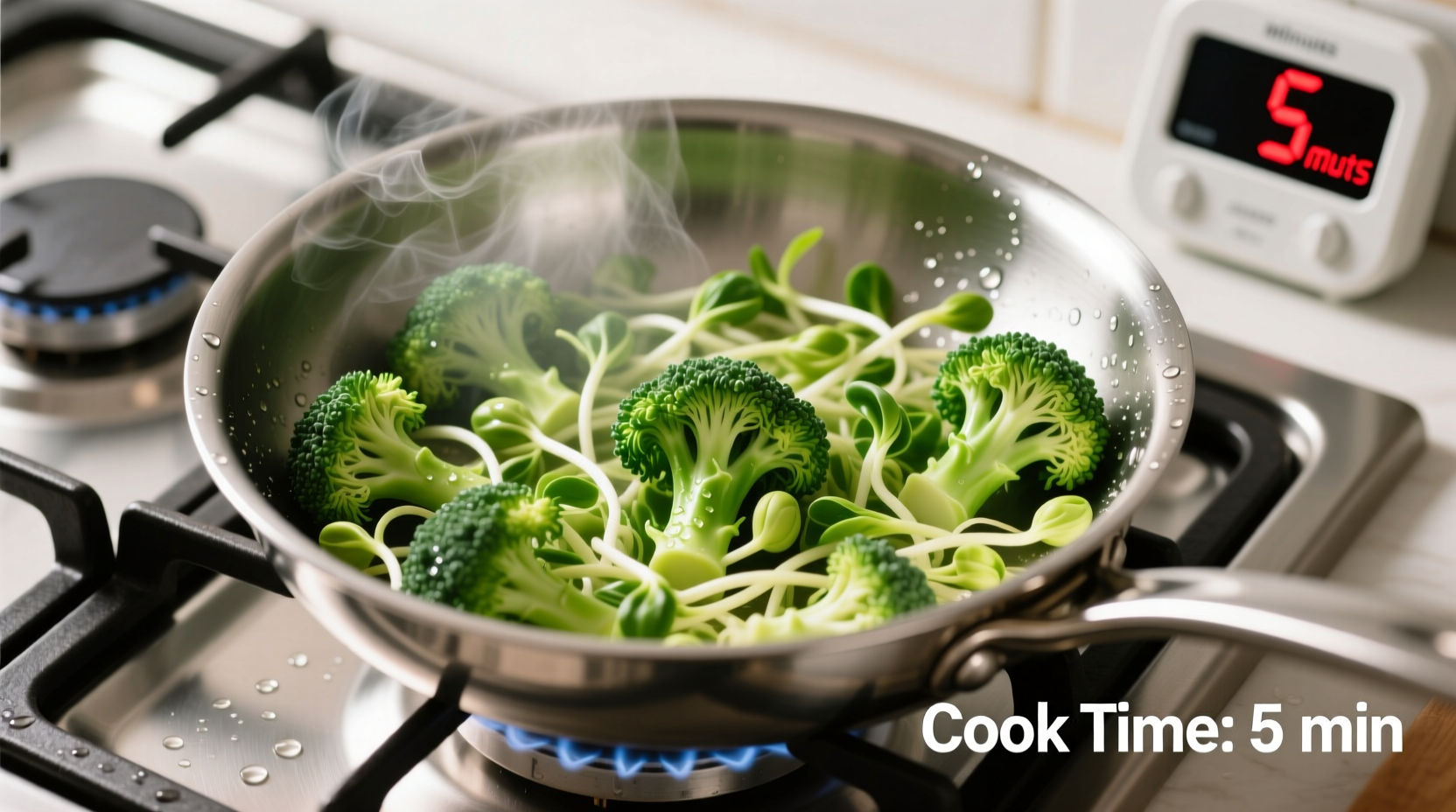Boil sprouts for 6-8 minutes, roast at 400°F (200°C) for 20-25 minutes, or sauté for 8-10 minutes for perfect tender-crisp results. Undercook to maintain texture, overcook to avoid mushiness—timing varies by method and sprout size.
Getting sprouts just right separates good cooks from great ones. Whether you're preparing Brussels sprouts for a holiday dinner or weeknight side, precise timing transforms these tiny cabbages from bitter to brilliantly nutty. As a chef who's cooked thousands of sprouts in professional kitchens and home settings, I've perfected timing across all cooking methods—no more guessing when they're done.
Why Cooking Time Matters for Sprouts
Sprouts contain sulfur compounds that create unpleasant odors when overcooked. Proper timing preserves their natural sweetness while eliminating bitterness. Undercooked sprouts stay tough with raw flavors, while overcooked versions turn mushy and release that distinctive 'overdone vegetable' smell most people dislike.
| Cooking Method | Prep Time | Cooking Time | Optimal Temperature |
|---|---|---|---|
| Boiling | 5 minutes | 6-8 minutes | 212°F (100°C) |
| Steaming | 5 minutes | 7-9 minutes | 212°F (100°C) |
| Roasting | 10 minutes | 20-25 minutes | 400°F (200°C) |
| Sautéing | 5 minutes | 8-10 minutes | 375°F (190°C) |
| Air Frying | 5 minutes | 12-15 minutes | 380°F (193°C) |
Preparation Essentials Before Cooking
Proper prep significantly impacts cooking time. Trim the dry stem end and remove any yellowed outer leaves. For uniform cooking, cut larger sprouts in half through the stem. Smaller sprouts (under 1 inch) cook faster—reduce times by 1-2 minutes. Always wash sprouts thoroughly in cold water to remove dirt trapped between leaves.

Boiling and Steaming: The Classic Approach
Boiling remains the quickest method for weeknight dinners. Use a large pot with plenty of salted water (2 tablespoons salt per gallon)—this seasons from within and preserves color. Add sprouts to already boiling water to maintain consistent timing.
Timing progression for boiling:
- 0-4 minutes: Raw, crunchy texture
- 5-6 minutes: Slightly tender but still firm
- 6-8 minutes: Ideal tender-crisp stage
- 9+ minutes: Mushy with strong sulfur odor
Steaming takes slightly longer but preserves more nutrients. The USDA recommends steaming vegetables to maintain higher vitamin content compared to boiling (USDA Food and Nutrition Research). Check sprouts at 7 minutes—they're done when a knife slides easily into the center with slight resistance.
Roasting: Developing Deep Flavor
Roasting transforms sprouts through caramelization. Toss trimmed sprouts with 1 tablespoon olive oil per pound, ensuring even coating. Spread in a single layer on a parchment-lined baking sheet—crowding causes steaming instead of roasting.
Professional kitchens follow this roasting timeline:
- 0-10 minutes: Moisture evaporates, no browning
- 10-15 minutes: Edges begin crisping
- 15-20 minutes: Significant caramelization
- 20-25 minutes: Perfect golden-brown with crispy edges
Flip halfway through cooking for even browning. The Food Network's test kitchen confirms that 400°F delivers optimal results without burning (Food Network Cooking Guide).
Sautéing and Air Frying for Quick Results
Sautéing works best for smaller batches. Heat oil in a skillet over medium-high until shimmering. Add sprouts cut-side down for maximum caramelization. Cook undisturbed for 4 minutes, then stir and continue until tender-crisp.
Air frying delivers roasted flavor faster. Shake the basket at 6 minutes to ensure even cooking. The reduced cooking time preserves more vitamin C—studies show air frying maintains higher nutrient levels than boiling (National Center for Biotechnology Information).
How to Tell When Sprouts Are Perfectly Cooked
Forget timers—use these visual and tactile indicators:
- Color change: Bright green deepens to olive green (avoid yellowing)
- Texture test: Knife inserts with slight resistance, not mushy
- Shrinkage: Sprouts reduce by about 25% in size
- Aroma: Nutty, roasted scent without sulfur notes
Undercooked sprouts feel hard when pierced; overcooked versions collapse under light pressure. The ideal stage offers slight resistance when bitten—a tender-crisp texture that holds its shape.
Avoiding Common Sprouts Cooking Mistakes
These errors sabotage perfect results:
- Overcrowding the pan: Creates steam instead of caramelization
- Skipping the trim: Uneven cooking from stem-to-tip
- Adding salt too late: Season water at start for proper penetration
- Not drying after washing: Water prevents proper browning
Context matters: Choose boiling for quick weeknight sides, roasting for special occasions, and sautéing for small portions. Holiday meals benefit from roasting's deeper flavor, while weeknight dinners often work better with faster boiling or air frying methods.
Storing and Reheating Leftover Sprouts
Cooked sprouts keep 3-4 days in airtight containers. Reheat roasted sprouts in a 375°F oven for 8-10 minutes to restore crispness—microwaving makes them soggy. Boiled sprouts reheat best in a skillet with a splash of water to revive texture.











 浙公网安备
33010002000092号
浙公网安备
33010002000092号 浙B2-20120091-4
浙B2-20120091-4